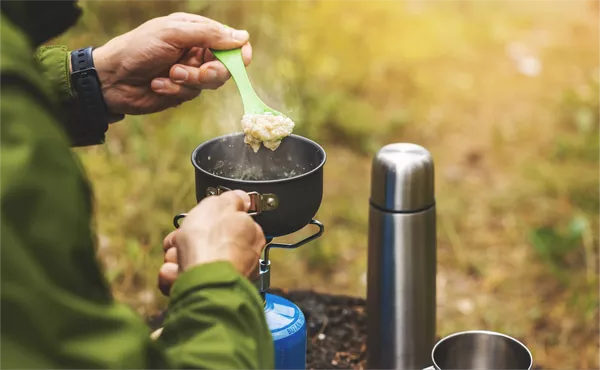When it comes to outdoor adventures, whether it’s a weekend camping trip or a multi-day trek into the wilderness, having a reliable camping stove is essential for cooking meals and boiling water. These stoves are powered by various types of fuel, each with its own characteristics and advantages. Understanding the different gas options available for camping stoves is crucial for ensuring you have the right equipment for your outdoor escapades.
Types of Gas Used in Camping Stoves
Camping stoves primarily use three main types of gas: propane, butane, and isobutane. These gases are stored in pressurized canisters designed specifically for outdoor cooking. Let’s delve deeper into each of these fuels to grasp their features and suitability for camping.
1. Propane
Propane is a popular choice for camping stoves due to its efficiency and versatility. It is stored in steel canisters that can withstand higher pressures, making them suitable for a range of temperatures and altitudes. Propane performs well even in colder conditions, unlike some other gases that struggle in low temperatures.
One of the key advantages of propane is its energy density, which means it can produce a significant amount of heat for cooking. This makes it ideal for larger groups or extended trips where more cooking power is needed. Propane canisters are typically equipped with a threaded valve, allowing them to be easily attached to camping stoves for quick setup and use.
However, propane canisters tend to be bulkier and heavier compared to other gas options, which may impact the overall weight of your camping gear. Nevertheless, many campers prioritize the performance and reliability of propane, especially for longer excursions where fuel efficiency and power are paramount.
2. Butane
Butane is another common gas used in camping stoves, favored for its ease of use and portability. Butane canisters are typically made of aluminum, which makes them lightweight and convenient for backpackers and hikers looking to minimize weight.
Butane performs best in moderate temperatures and at lower altitudes, making it an excellent choice for summer camping trips or lower-elevation adventures. The fuel burns cleanly and efficiently, providing a steady flame for cooking tasks.
One drawback of butane is its performance in colder conditions. The boiling point of butane is higher than propane and isobutane, which means it may struggle to vaporize in colder temperatures, leading to decreased efficiency or even failure to ignite in extreme cold.
3. Isobutane
Isobutane is a close cousin of butane but with a lower boiling point, making it more suitable for colder environments. Isobutane canisters are also typically made of aluminum and are lightweight like butane canisters.
The advantage of isobutane lies in its ability to perform well in varying temperatures, including colder conditions that would challenge butane. This makes isobutane a preferred choice for high-altitude camping or trips during colder seasons.
Like butane, isobutane burns cleanly and efficiently, producing a steady flame that’s ideal for cooking. Its compatibility with colder temperatures makes it a versatile option for campers who venture into more challenging environments.
Factors to Consider When Choosing Gas for Camping Stoves
When deciding which gas to use for your camping stove, consider the following factors:
1. Climate and Altitude
The climate and altitude of your camping destination play a significant role in determining which gas will perform best. If you’re camping in colder conditions or at higher elevations, prioritize fuels like propane or isobutane that can handle lower temperatures.
2. Cooking Needs
Evaluate your cooking needs based on the size of your group and the types of meals you plan to prepare. For larger groups or extended trips, a fuel with higher energy density like propane may be more suitable.
3. Weight and Portability
For backpackers and ultralight enthusiasts, the weight of your camping stove and fuel canisters is critical. Choose lighter options like butane or isobutane for minimal weight impact.
4. Availability
Consider the availability of fuel canisters at your destination. Propane canisters are widely available in many outdoor stores, while butane and isobutane may be less common in certain regions.
Conclusion
Selecting the right gas for your camping stove is a balancing act between performance, convenience, and environmental factors. Each type of gas has its strengths and limitations, so understanding these distinctions will empower you to make an informed decision based on your specific needs and the conditions of your outdoor adventure.Whether you opt for the robust efficiency of propane, the lightweight convenience of butane, or the cold-weather resilience of isobutane, rest assured that with the right fuel, your camping stove will be a reliable companion on your outdoor journeys. Take into account the factors discussed above, experiment with different fuels, and enjoy the culinary delights of outdoor cooking wherever your adventures take you.

